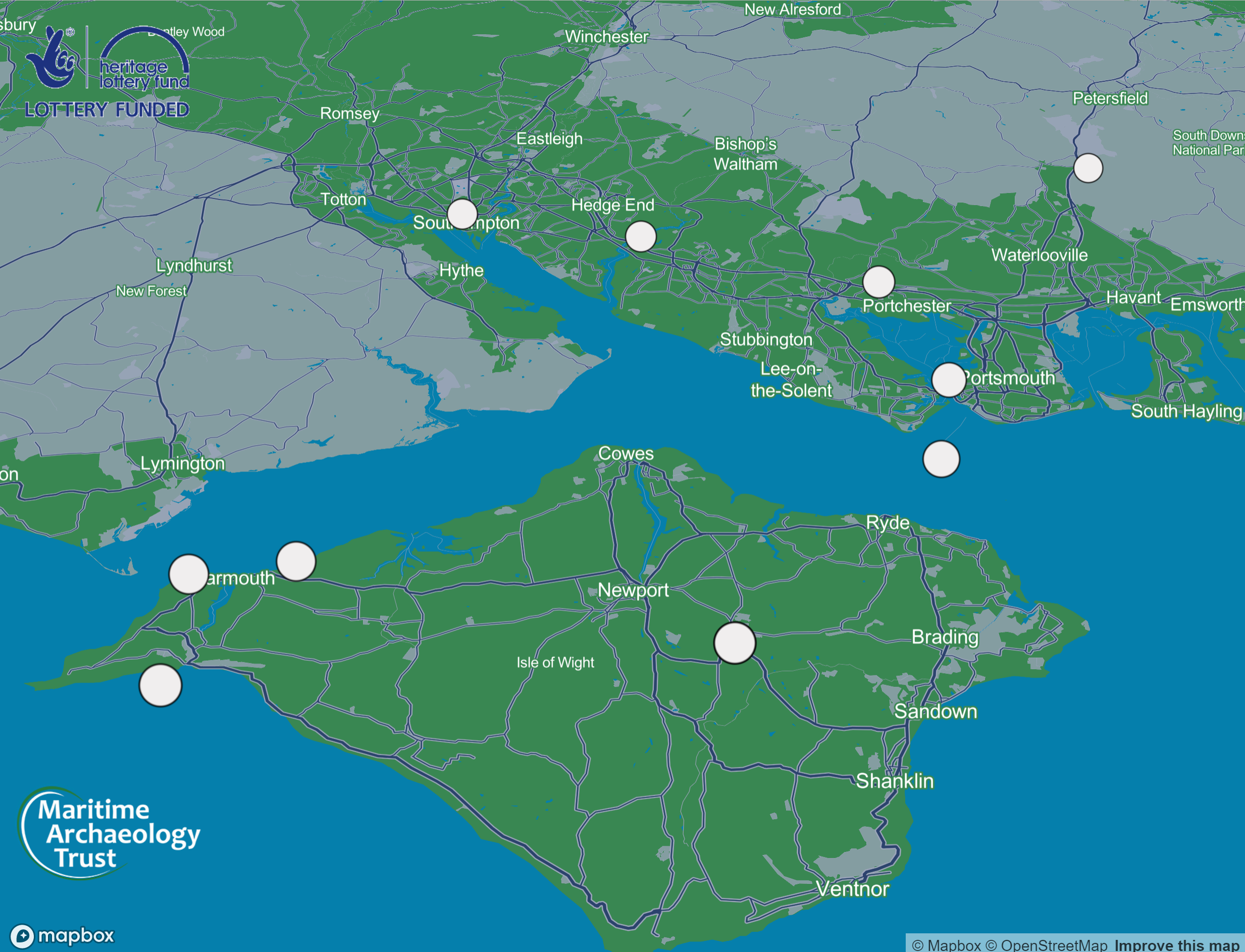
The Canoe to Canon project was a Heritage Lottery funded project (HLF) run by the Friends of the Maritime Archaeology Trust (MAT). It focuses on the significance of maritime archaeology and history tracing Britain’s development as an island and trading nation and encompasses possible trade in the Mesolithic (c8000 years ago) through to modern defence of the nation’s trade routes.
Surrounded by rivers during Prehistory, settlers used watercraft to reach Britain. As sea levels rose, developing trade routes required larger, sturdier craft. MAT has discovered a possible logboat at Bouldnor Cliff, a site now submerged off the Isle of Wight. The discovery of domesticated wheat (einkorn) at this Mesolithic site, 2,000 years ahead of elsewhere in Britain, demonstrates that trade with European farmers may have taken place via river/sea during this period.
Over time, trade with other lands necessitated advanced watercraft to carry cargos on lengthier routes. Competition between nation states developed, leading to the use of weapons to keep trade routes open protecting goods from marauding vessels. By the 15th century cannon became commonplace on ships and by the 17th Century the Royal Navy were being called upon to protect trade routes.
This project used the maritime story to engage local people with their heritage, from the earliest trade through to the development of trade routes and the inevitable development of weapons for protection of cargo.
Participants visited heritage venues, and attended hands-on demonstrations and workshops. The project is also promoted the Friends of the Maritime Archaeology Trust within the community, encouraging a wider diversity and greater number of people to become involved.
A visit to Exbury saw demonstrations of woodworking techniques using ancient ‘tools’ that would have been used to build boats. Participants had a chance to try out the tools and see a flint knapping demonstration.
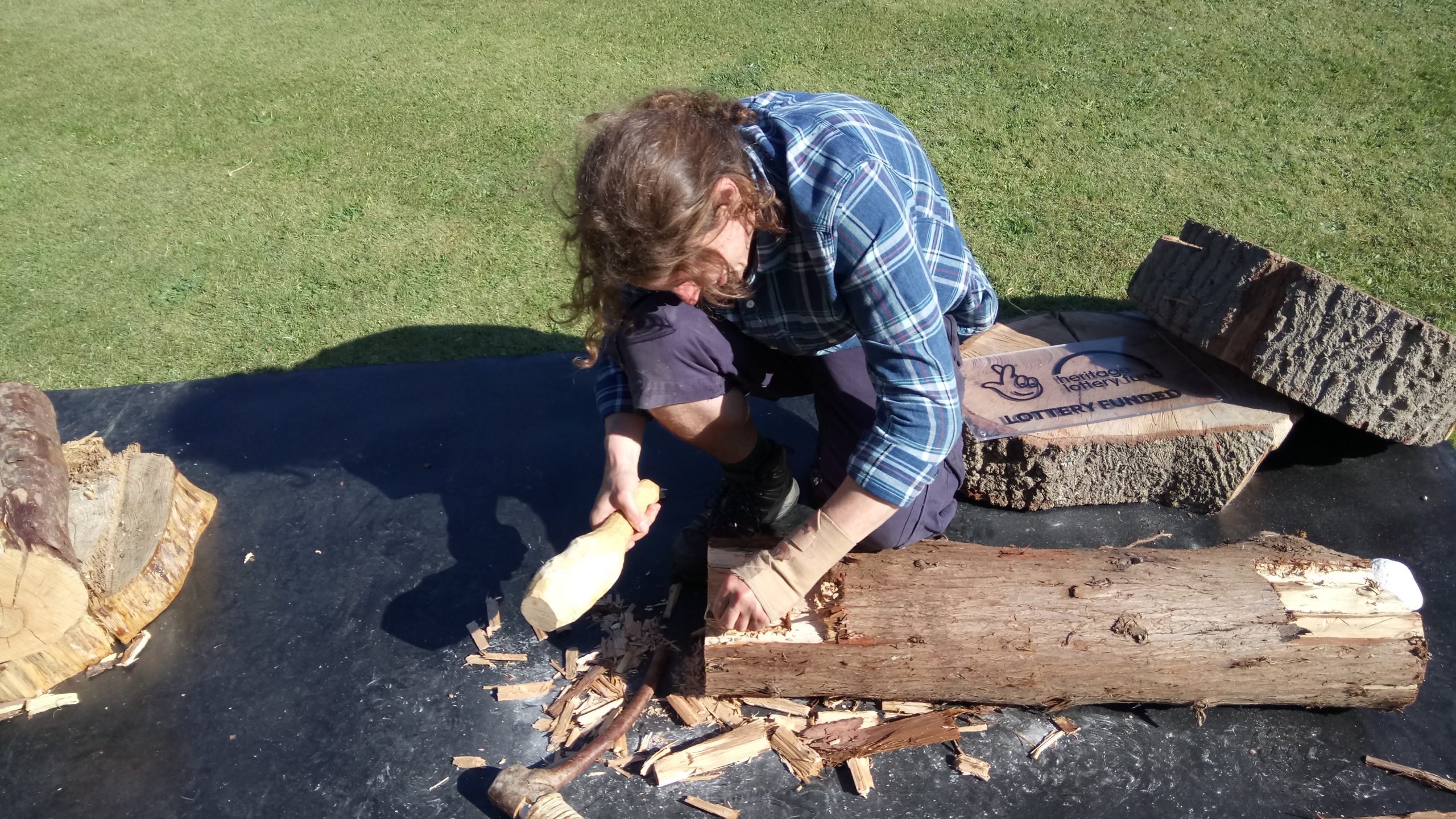
Wood working techiniques being practiced
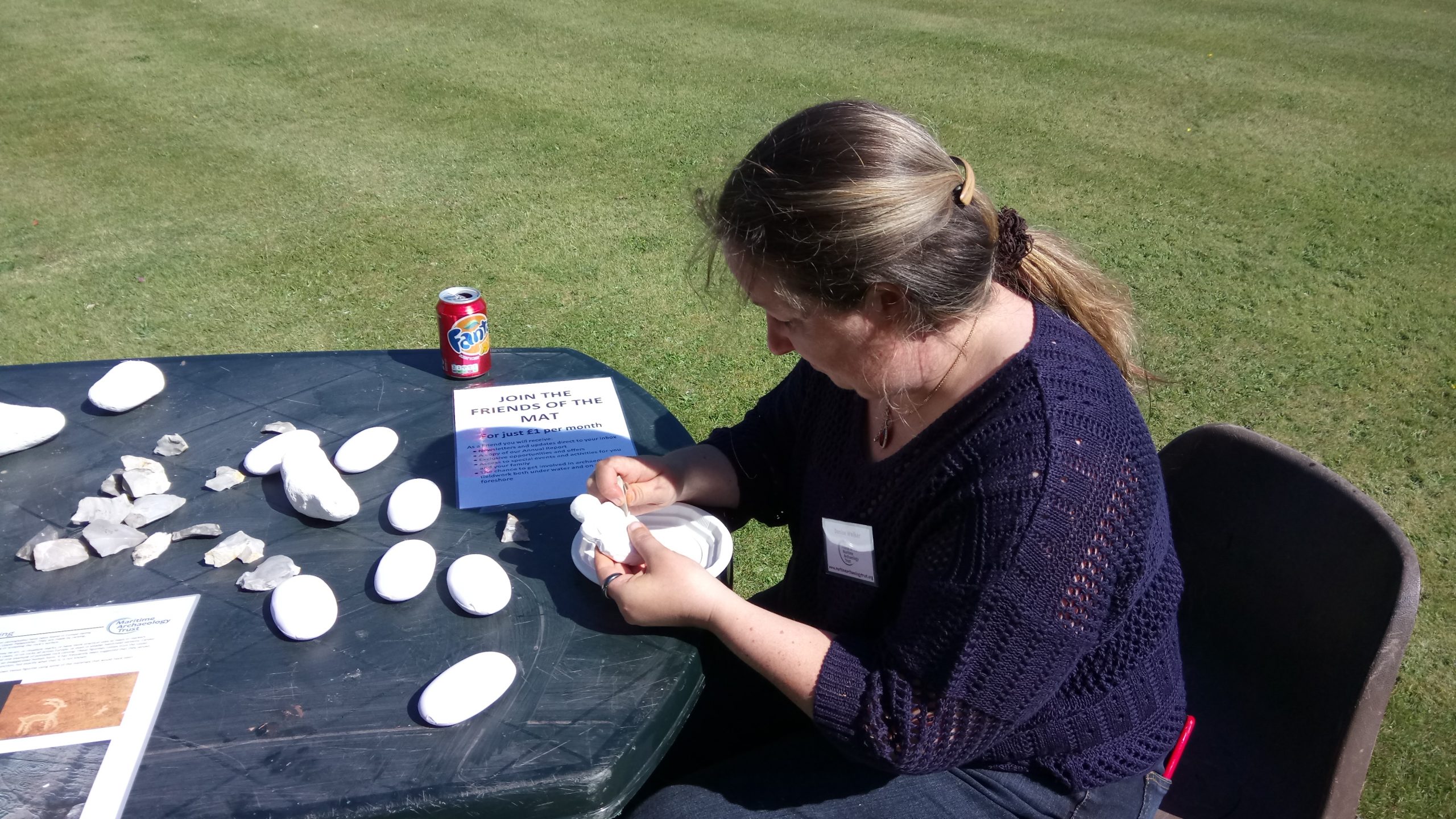
Trying out rock carving copying examples of portable antiquities that have been discovered (using soap as the medium is much easier!)
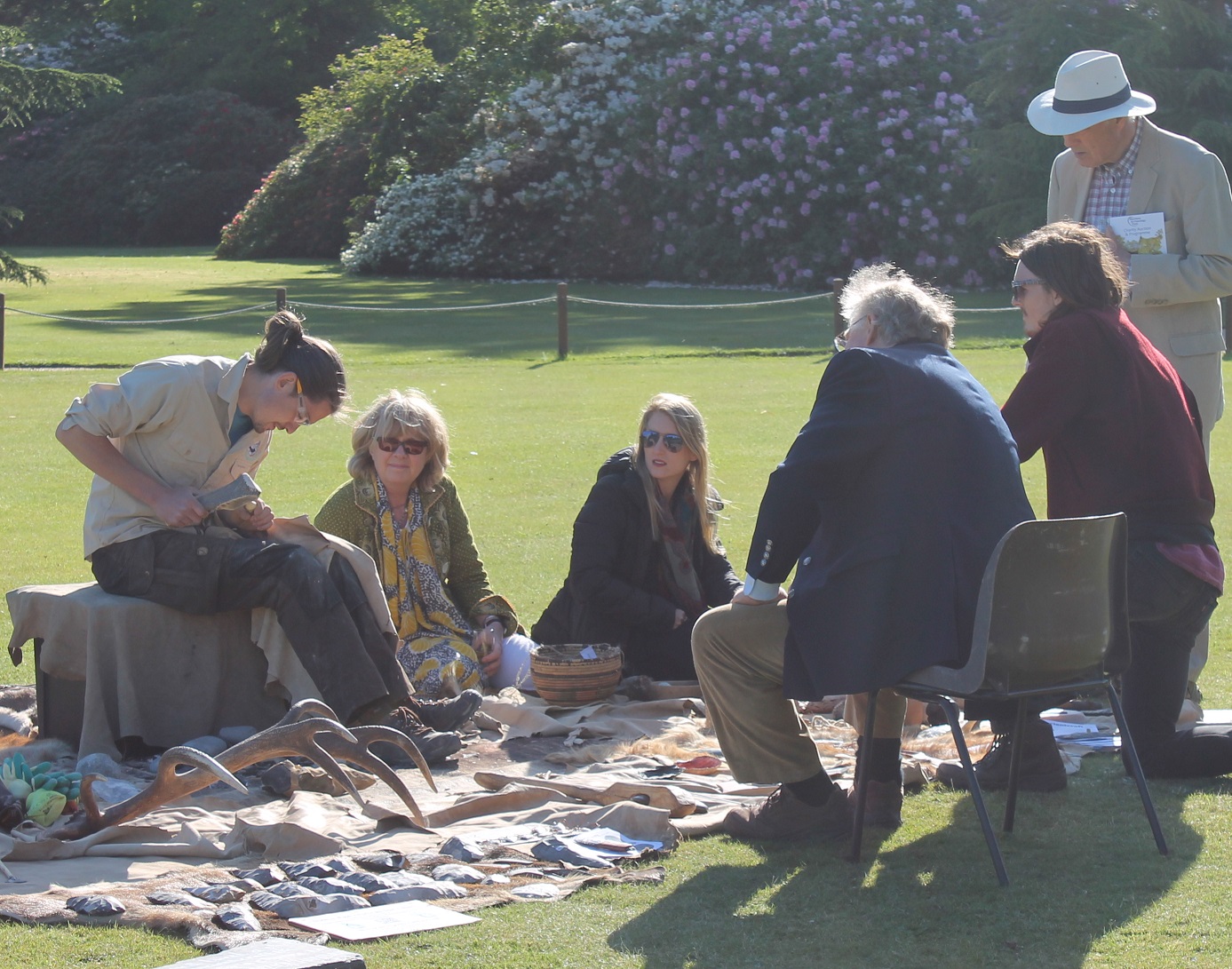
Flint knapping demonstration
The section of ‘log boat’ found at Bouldnor Cliff, the 8,000 year old submerged Mesolithic (Middle Stone Age) site, would probably have been for use along rivers and lakes surrounding the area possibly for fishing. The Mesolithic people were hunter gathers, they were self-sufficient and not depending on the exchange of food or items such as tools (of which there have been hundreds discovered at the Bouldnor Cliff site, and many of a type that may have come from further afield).
The sophistication of some of the woodworking at Bouldnor demonstrates a technique not seen in the UK until the Neolithic (new Stone Age) over 2,000 years later. Also discovered at this site through the extraction of sedimentary ancient DNA was the existence of wheat (einkorn) which indicates that farmed wheat that emanated from the Middle East was here 2,000 years before it has been found elsewhere in the UK. As this seems to be a discrete sample it does not seem that it was cultivated here, but there is the possibility that it may have been brought from Western France where the cultivation of wheat has been recorded around 7,400 years ago. As sea levels were lower at this time it is possible that goods and influences reached the Isle of Wight from France along coastlines via estuaries with the aid of watercraft.
At Buster Ancient Farm near Petersfield Ryan Watts demonstrated experimental Archaeology he has been carrying out on the construction of ancient log boats/canoes. He gave an informative talk to the group, and we discovered that they are growing the ancient wheat, einkorn, of the type recorded at Bouldnor Cliff through sedimentary DNA.
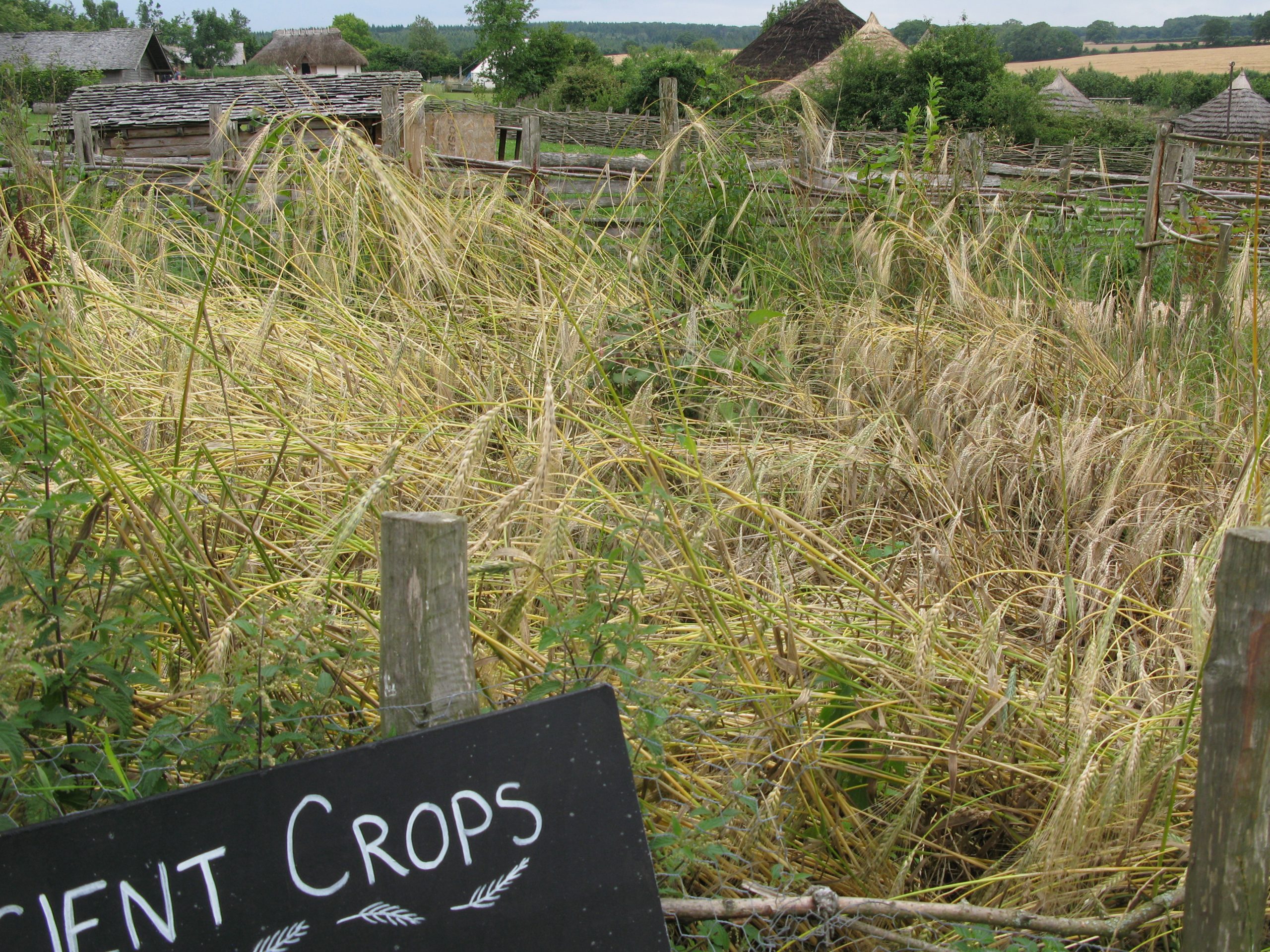
Ancient crop einkorn being grown at Butser Ancient Farm
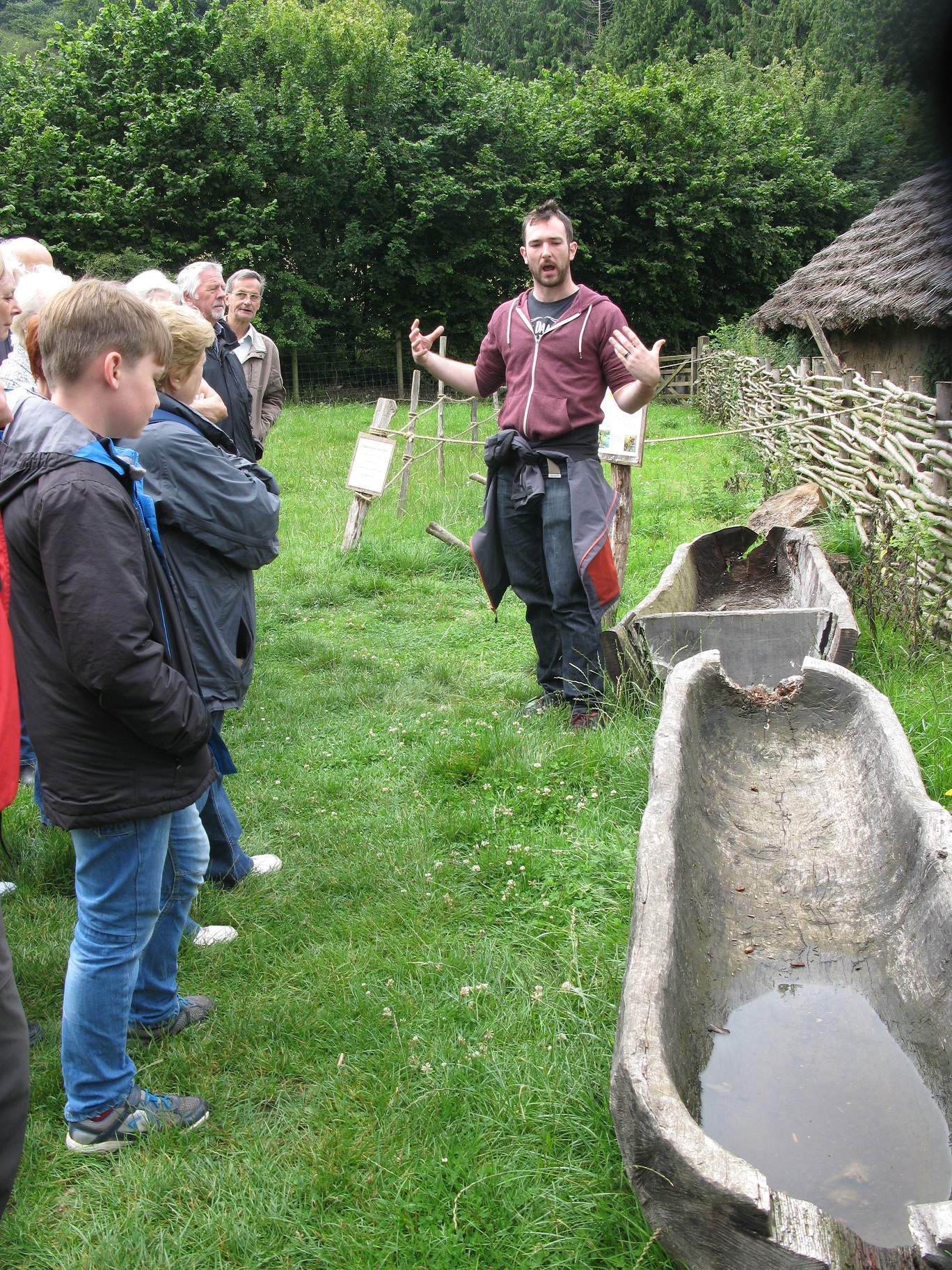
An explanation of experimental logboat building
A trip to Burley to the Shapely Bottom heritage event saw more participants learn about ancient craft and practice woodworking skills and other ancient arts such as rock carvings (carried out in soap in this case) and spear throwing (particulaly popular!)
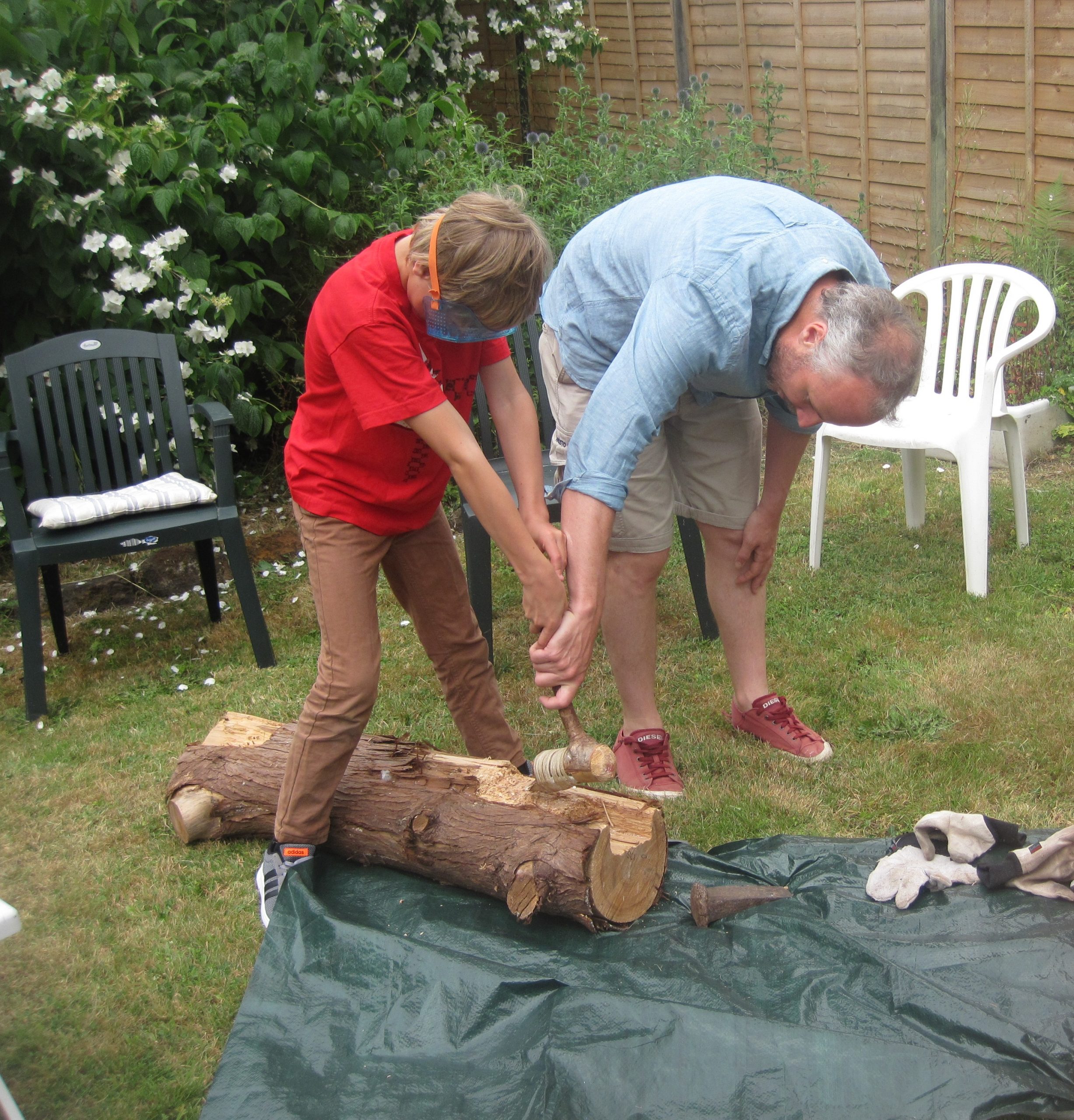
Woodworking experience
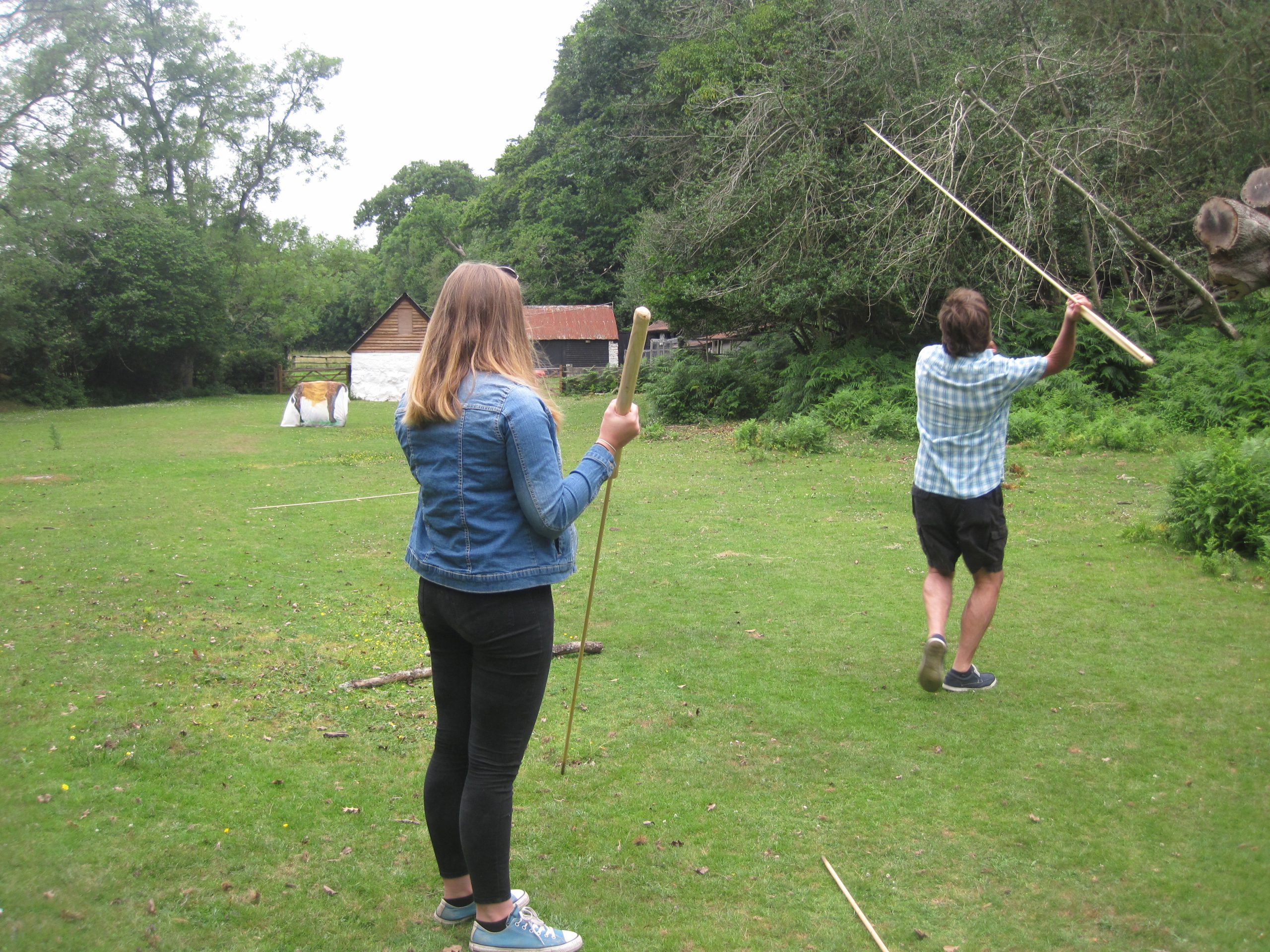
Spear throwing at an Auroch (ancient cow) target
Sunken Secrets is situated at Fort Victoria on the Isle of Wight, it houses the Alberghetti gun which is believed to have come from the Santa Lucia which was shipwrecked off Yarmouth on the Isle of Wight in 1567. Santa Lucia was a Spanish ship carrying a cargo of Wool to Flanders. As mentioned earlier, from the 15th century cannon became common place on ships to protect them from being hijacked for their ship and/or the cargo so it was no surprise to find that this ship had been carrying such a weapon in the 16th century. The beautiful bronze gun is a splendid example of how even the guns themselves might invite trouble from marauding vessels looking for ‘bootie’. A mixed group went along to view the gun and take part in activities at Sunken Secrets.
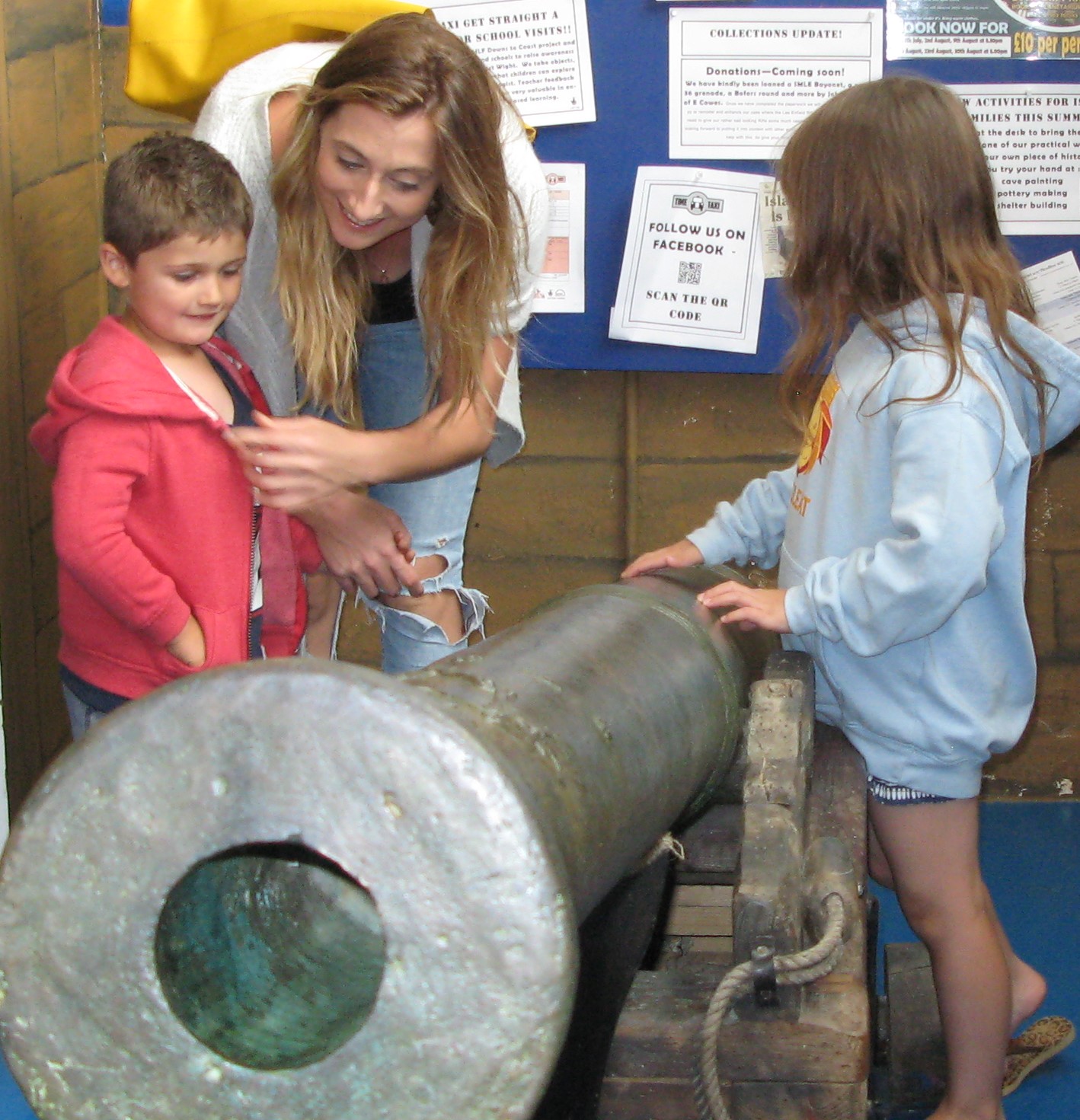
Examining the markings on the gun that indicate where it originated from
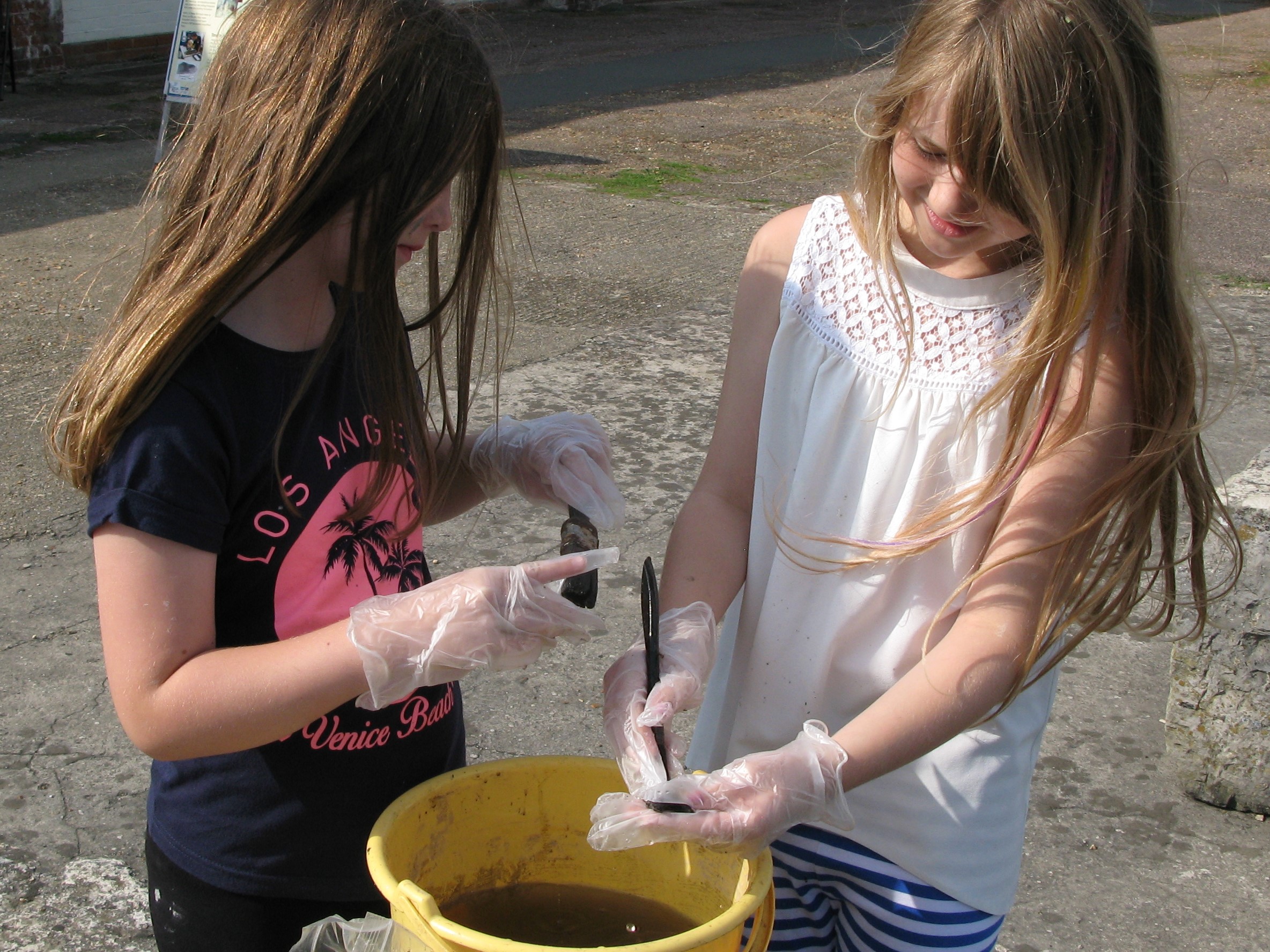
Cleaning ancient wood to observe markings
A rare opportunity to help record some of the actual timbers that have been found at the 8,000 year old submerged landscape was offered through the Canoe to Canon project. Those lucky enough to attend (as spaces were limited) enjoyed learning about cleaning, identifying and conserving ancient waterlogged wood from wood experts. An example of a wooden artefact being brought to life through 3D modelling can be seen here.
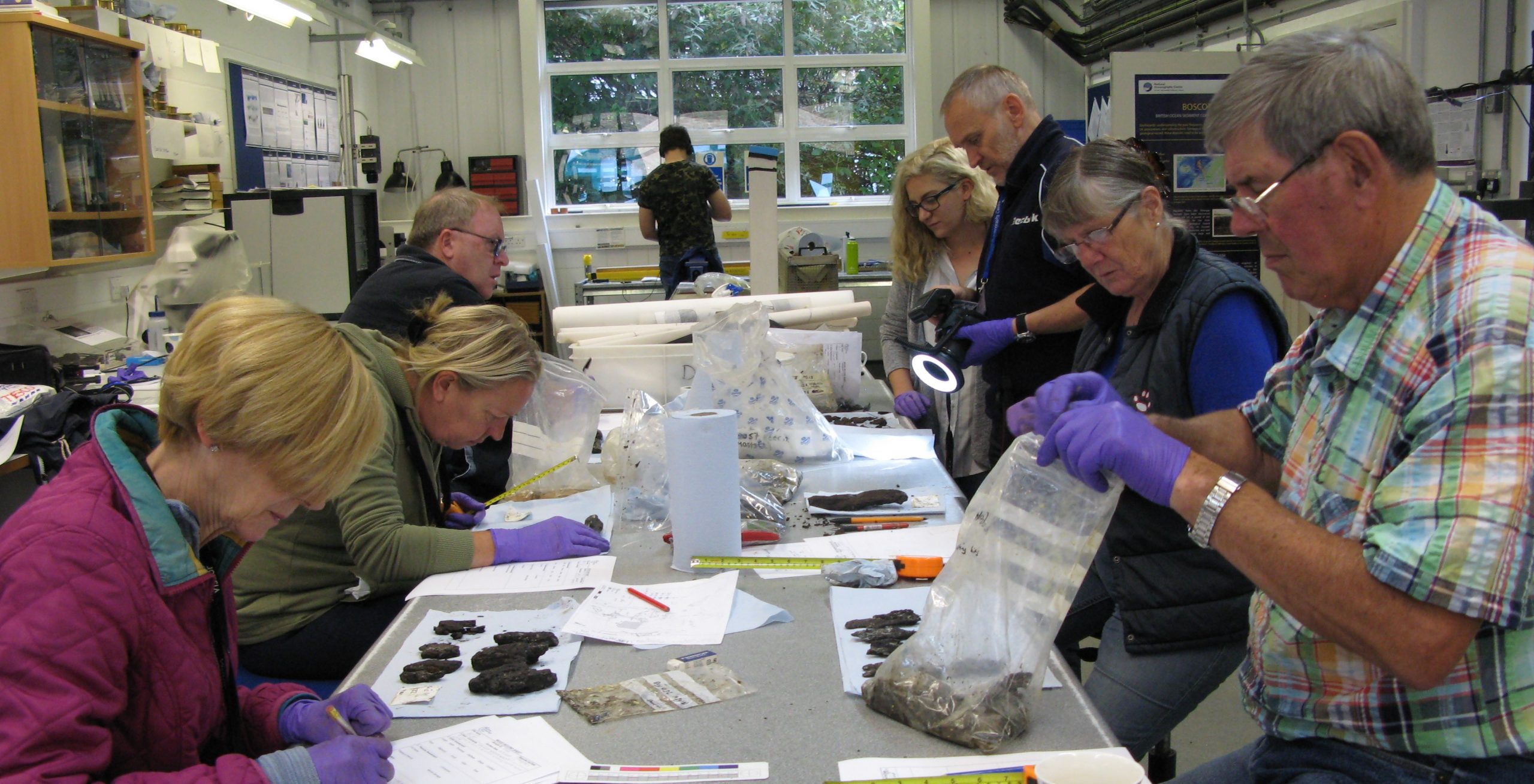
Participants get to work on the Bouldnor Cliff samples, under instruction
A reporter from ‘That’s TV’ came along to record the session, click here to see the video interview.
Participants got the chance to attend 3D photogrammetry workshops which saw a number of people learning about how the technique is carried out and how it can be applied to archaeology. They then had a practical session which allowed them to have a practice at undertaking the photography.
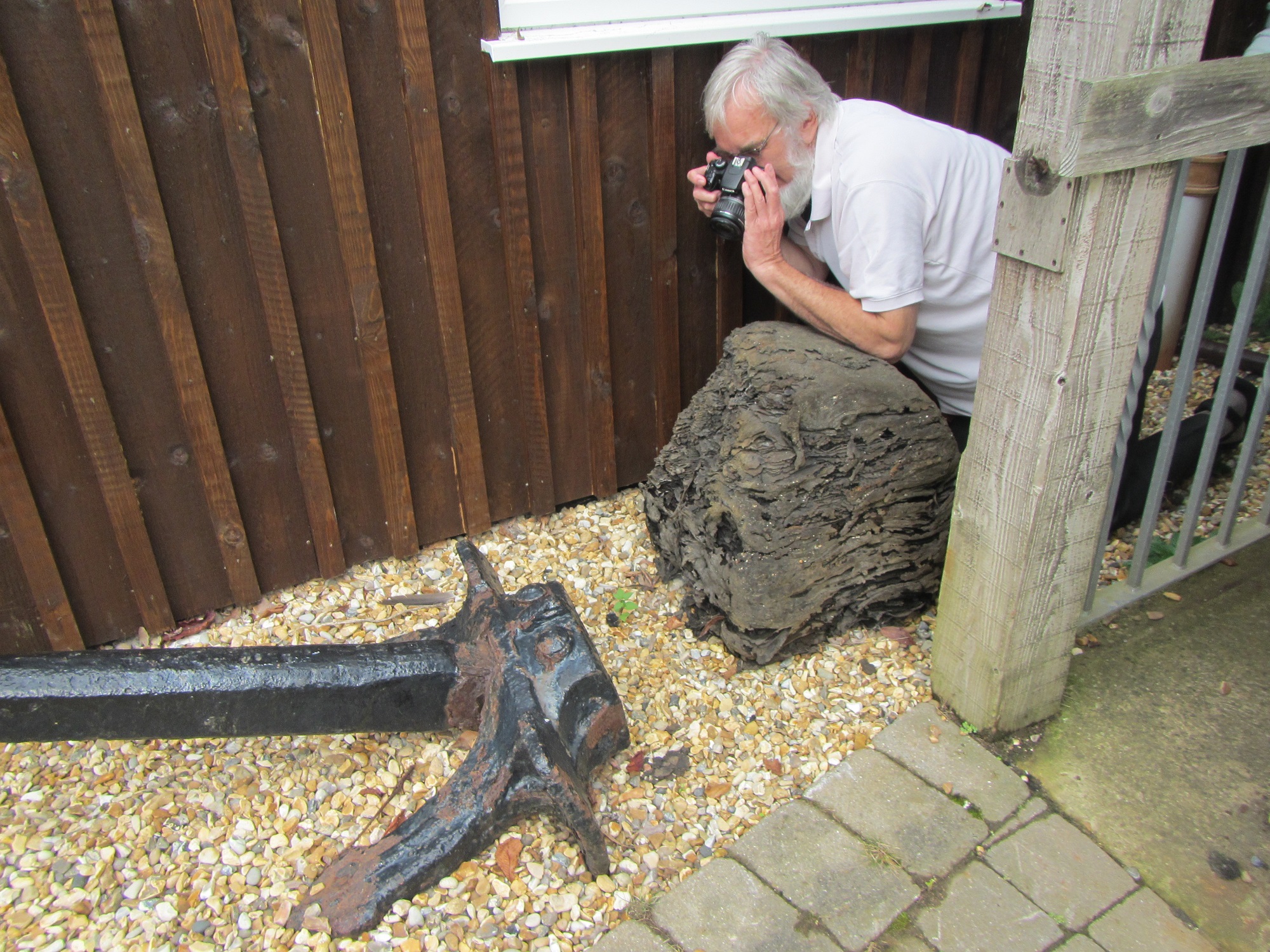
Taking pictures of an object from all angles
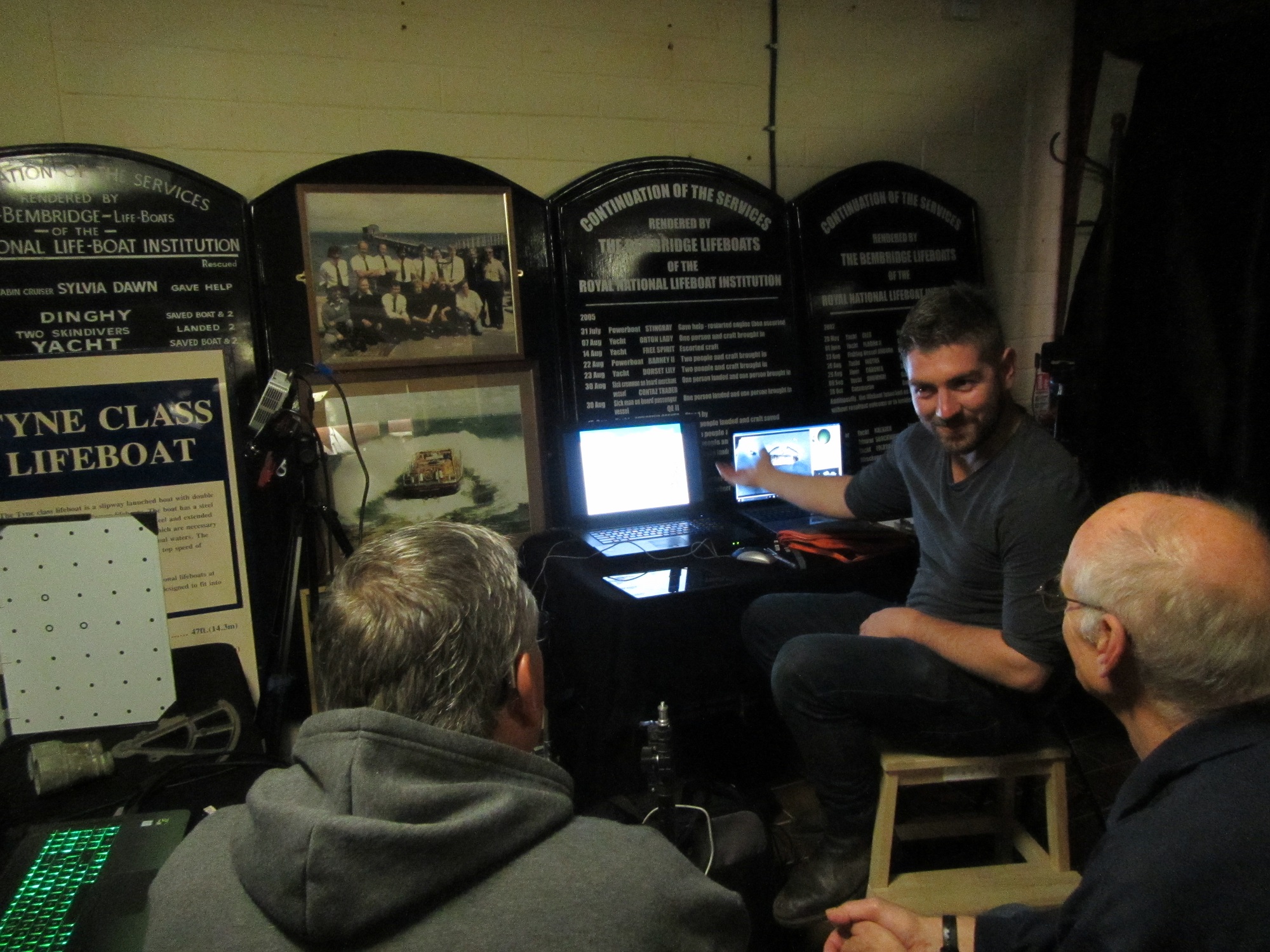
Learning the techniques
With a little help it is amazing what can be achieved with this technieque which helps to catalogue items in a museum allowing people to view them without having to actually attend the museum. Take a look at some of the artefacts and how 3D modelling can help bring artefacts to life here.
A visit to the Shipwreck Centre and Maritime Museum took place to view the amazing collection of arefacts recovered from shipwrecks of many eras. Pieces of Spanish silver and gold, antique diving equipment, and items from more modern shipwrecks along with a lot of ordnance. This is the collection of Martin Woodward, a professional diver since the 60’s, his dedication to researching the wrecks has helped him to identify many shipwrecks that had been wrongly named on charts.
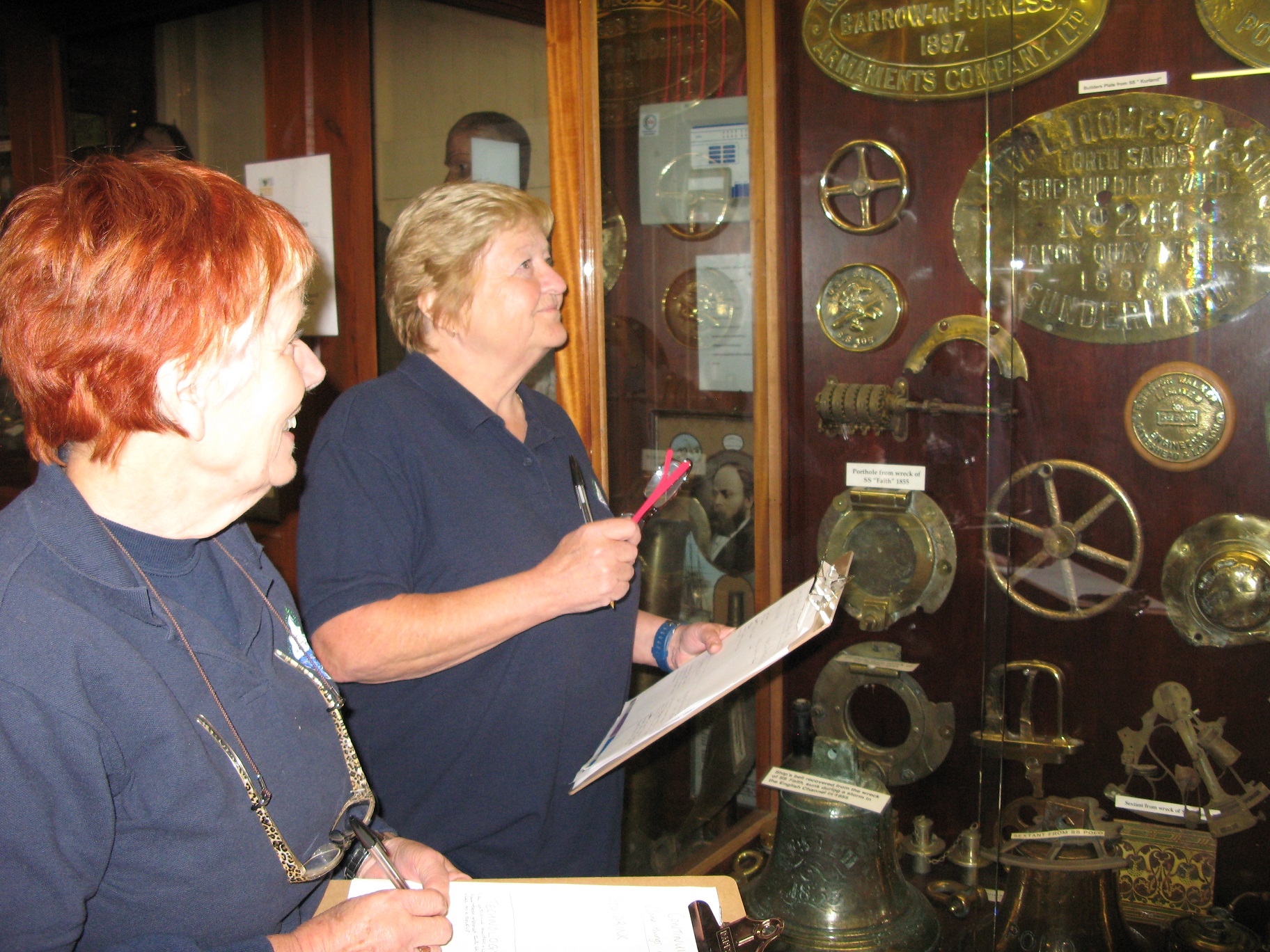
Viewing artefacts around the museum
As well as visiting the gallery and viewing the objects, the partcipants also got the change to help record them which gave them a really up-close and personal association with the articles and helped the museum in their cataloguing of the collection.
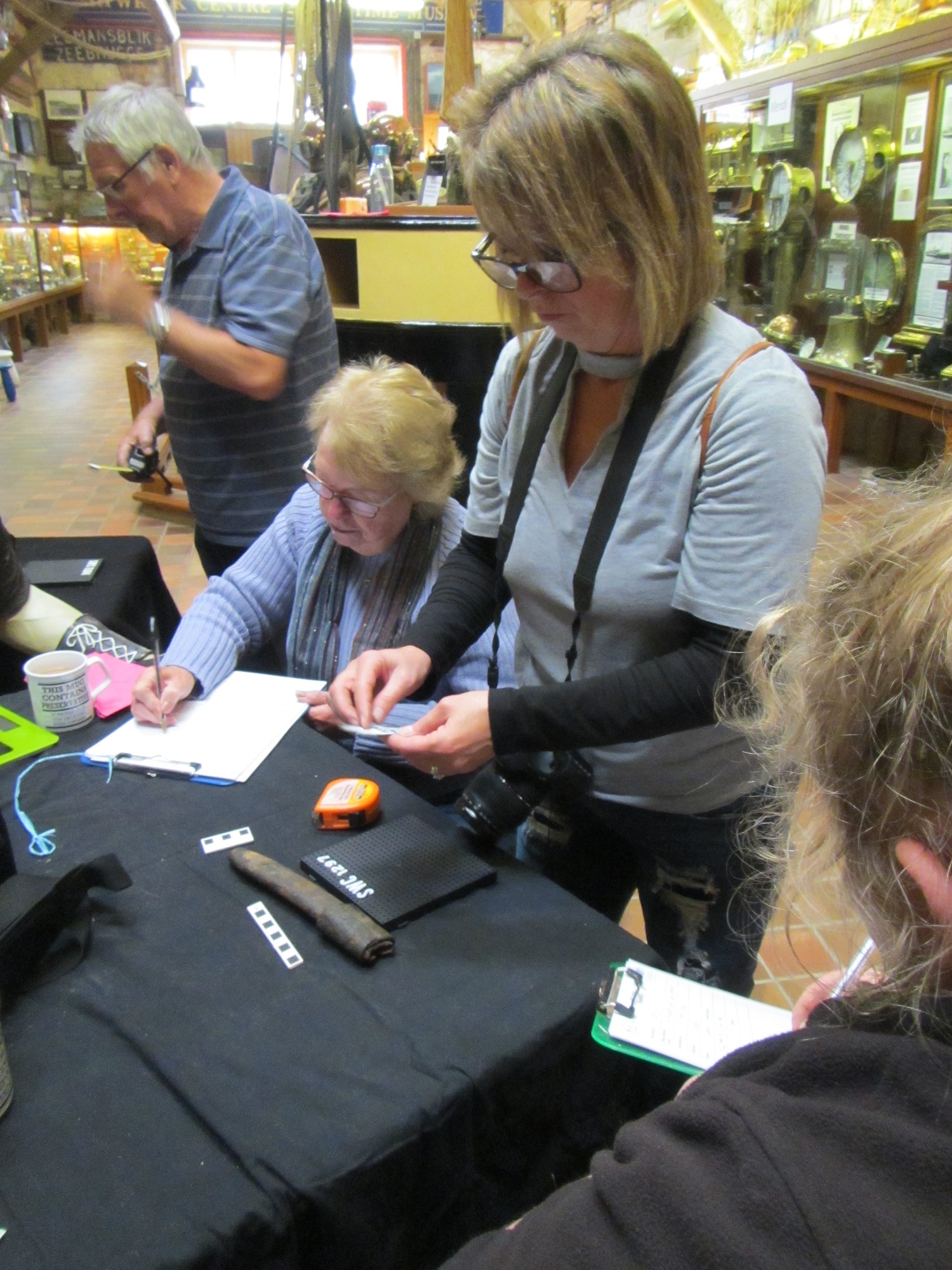
Participants help with recording objects by weighing, photographing, and making notes about each object.
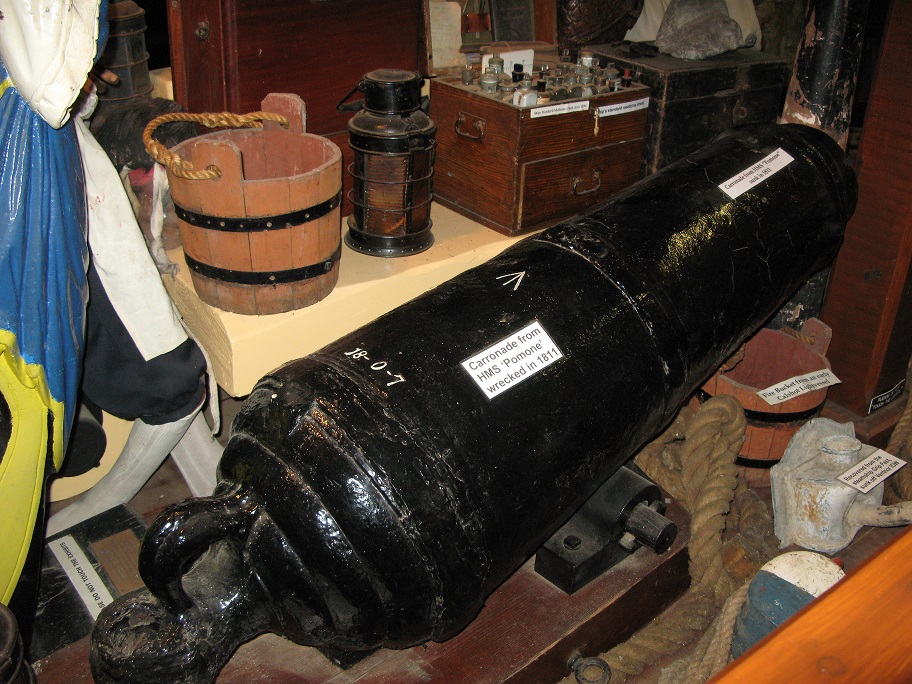
A carronade which helped identify the wreck of HMS Pomone shipwrecked on the Needles in 1811 as they date from only the latter 1/4 of the 18th cenury.
The Royal Armories, Fort Nelson, holds an array of all sorts of ordnance, from land and ships demonstrating the advances in ordnance as it has develped for over 500 years. As well as ordnance displays, Fort Nelson also has 19 acres of ramparts, secret tunnels and ammunition bunkers to explore. On our visit we learned about the Forts existance and heard the story of artilliary from before the age of gunpowder up to modern day weapons.
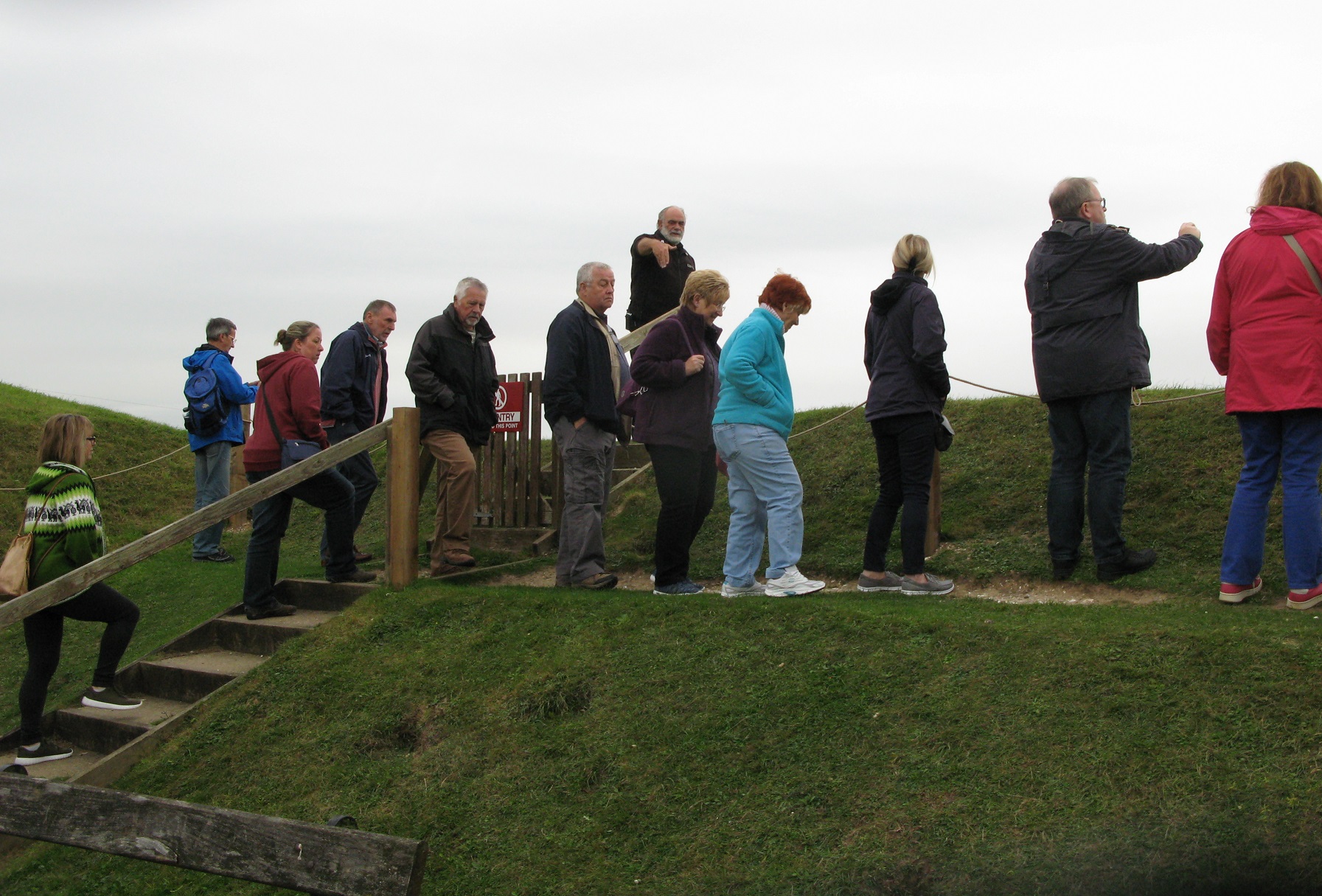
Exploring the ramparts at Fort Nelson
There are a couple of ships cannon being conserved in tanks that have been found in the River Thames and there is also a cannon that was raised from HMS Royal George which sadly sank in 1782 while achored at Spithead with the loss of more than 800 souls including many woman and children. The 100 gun first rate ship of the line had been anchored at Spithead, Portsmouth, along with the rest of Admiral Howe’s fleet, to sail the next day to relieve Gibraltar. There were many visitors on board which was the usual practice the day before the ship sailed as all shore leave was cancelled to avoid sailors deserting. The ship was taking on supplies when it was heeled over to allow a small repair in the hull, the heel became a capsize when the ship went beyond it’s centre of gravity, it filled with water through the gunports and quickly sank. Admiral Kempenfelt who was writing in his cabin, drowned along with the others.
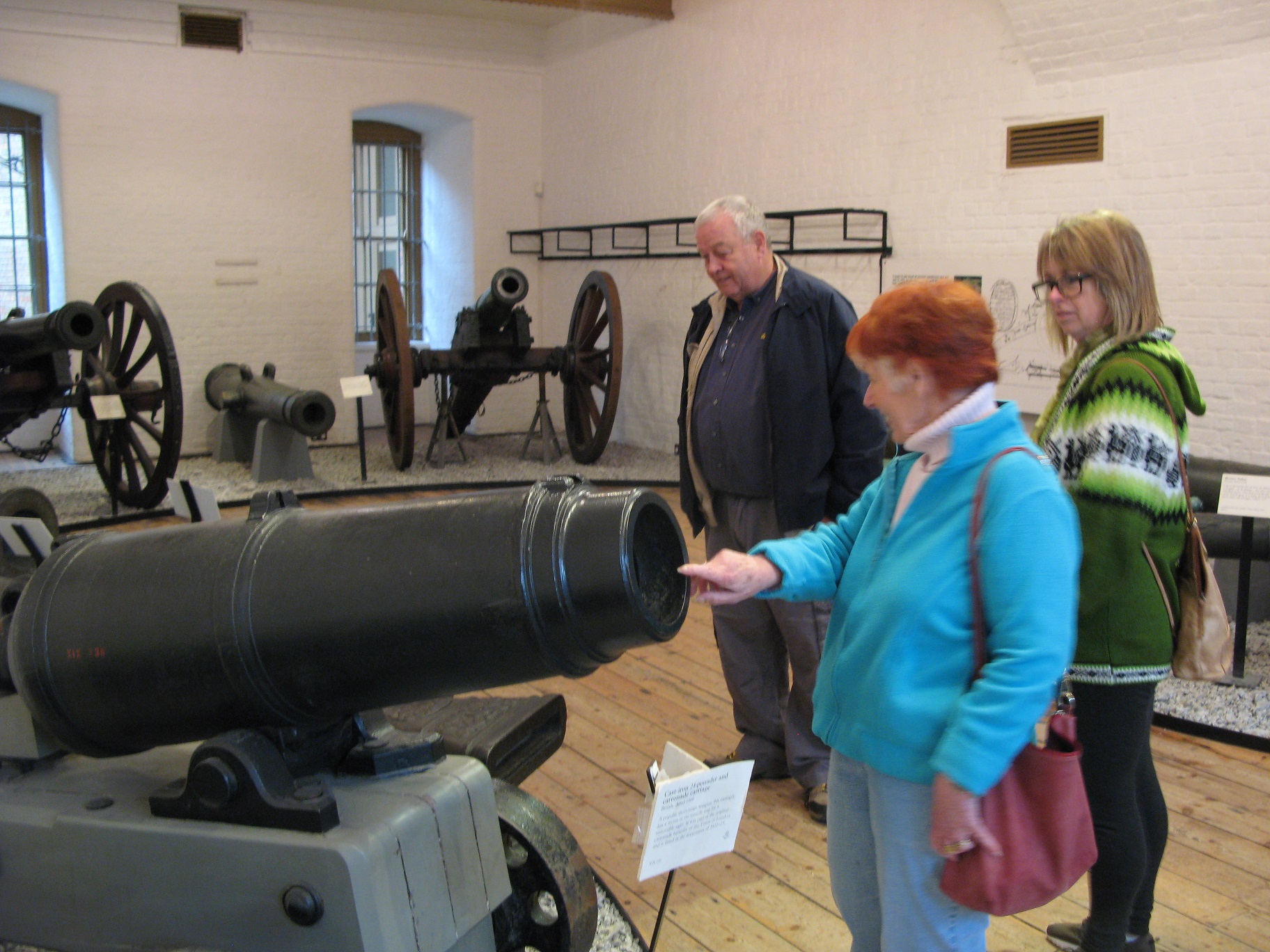
A carronade, a smaller cannon developed in Scotland for the Merchant Naval Service to save space but also often accompanied the conventional long guns on Royal Navy ships (HMS Victory carried two).
There was a gun firing demonstration at 1pm each day at Fort Nelson and we were lucky enough to be asked if one of our group would like to do the firing. So Robbie from our group got the honour of firing it.
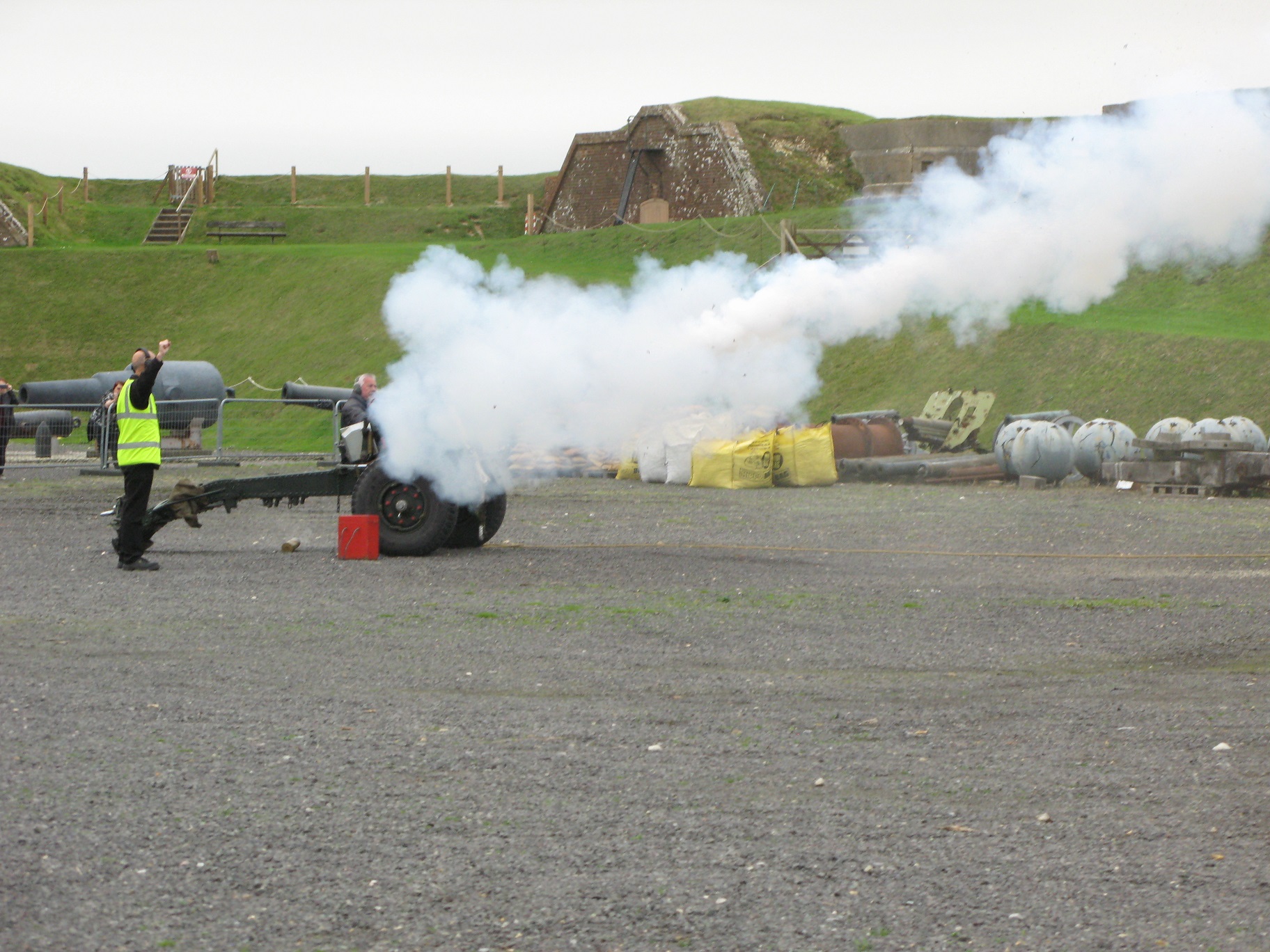
Robbie had the honour of firing the gun… twice!
At Sea City in Southampton a group tour took place which looked at trade coming into and out of Southampton since Roman times.
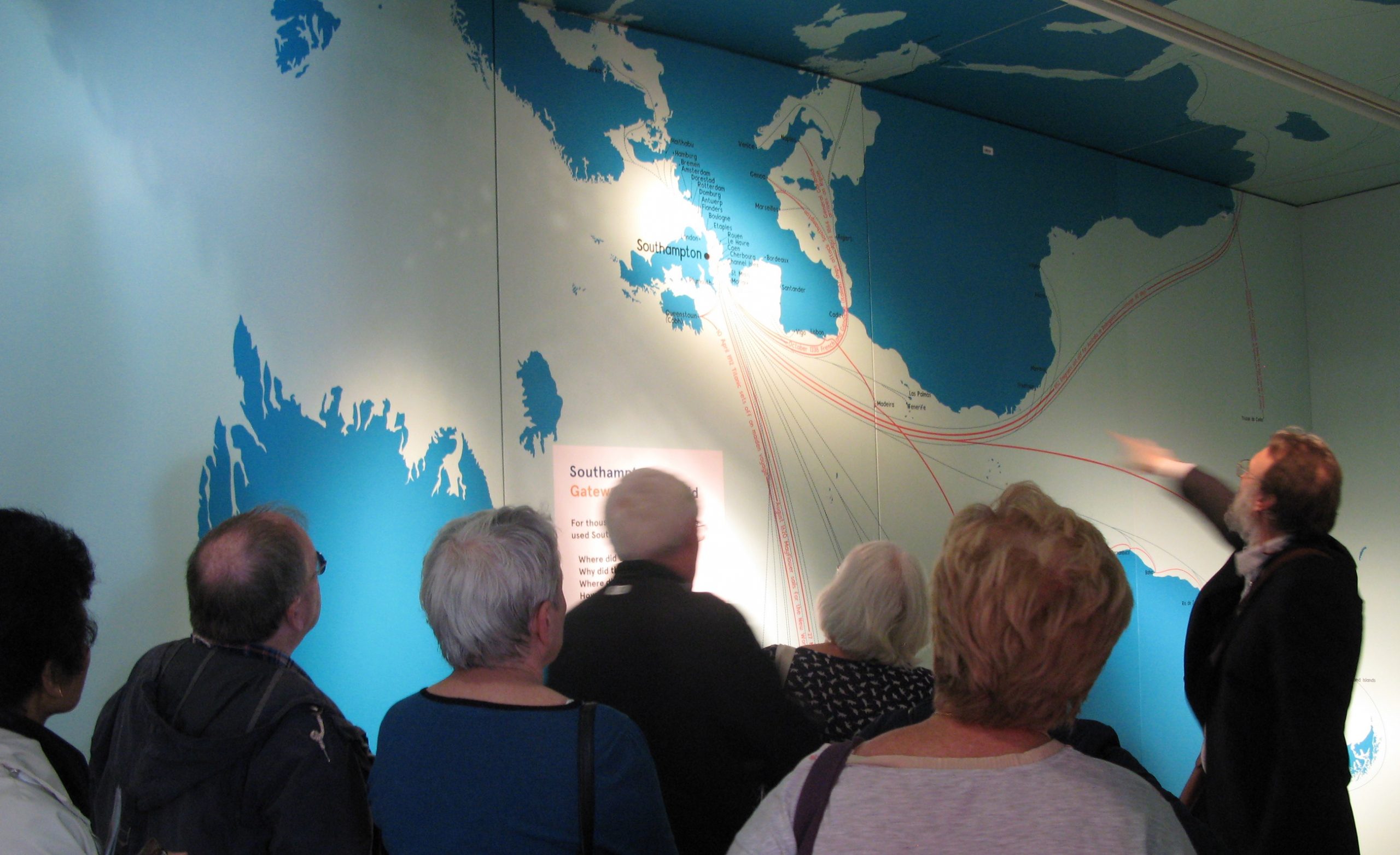
Our group learning about trade to and from Southampton from our tour guide.
We learned about the Romans operating a busy port around 70AD, followed by Saxon settlers bringing new trade and skills after around 407AD. The most important import and export being wine and wool respectively. During the 100 years war between England and France the construction of more Naval Ships took place with Henry V’s might Grace Dieu being built in Southampton in 1416. Trade flourished at this time with traders bringing in perfumes, spices and silk, along with alum and woad (to dye wool), exports consisted mainly of English wool and cloth.
The Pilgrim Fathers departed from Southampton for North America on the Mayflower in 1620 and the 16th and 17th century was a period of decline for the port. The 19th century waw trade increased and new docks had to be built to cope with the overwhelming trade. Many passenger liners moved their service to Southampton including the White Star line, owners of the fateful Titanic.
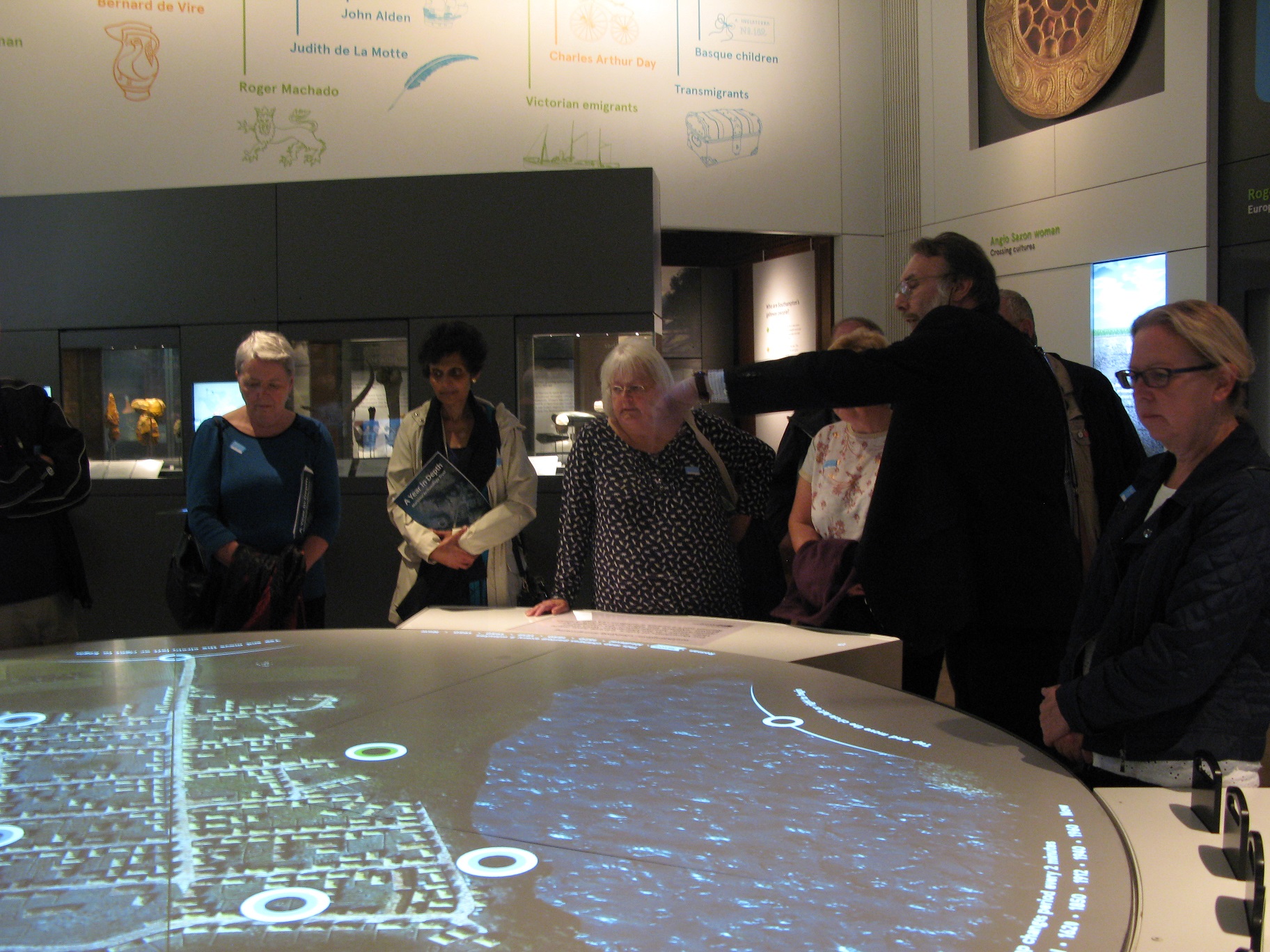
Interactive display in the museum.
Following our guided tour of Southampton, it’s trade and it’s poeple, we finished the visit by a look around the Titanic display which is an interactive display depicting the people who worked on board and the jobs they did, the sights and smells of 1912 right through to the oral testomy of the survivors in the disaster room. Southampton felt the disaster more than any other one place as there were more than 500 households who lost a family member.
Southampton was a busy port in the interwar years with the port handling 46% of UK’s ocean going passenger traffic. Today the port is still an important port for cruise ships and for the container ship traffic.

